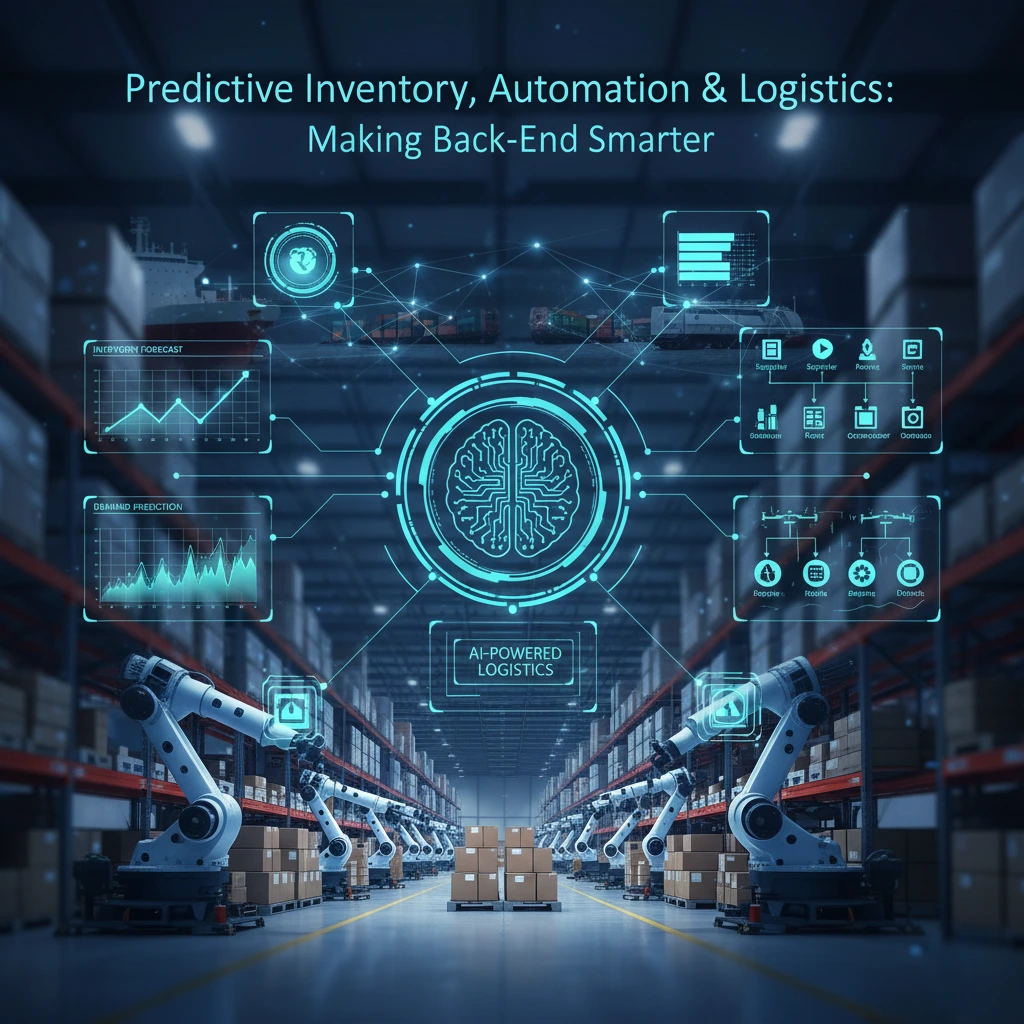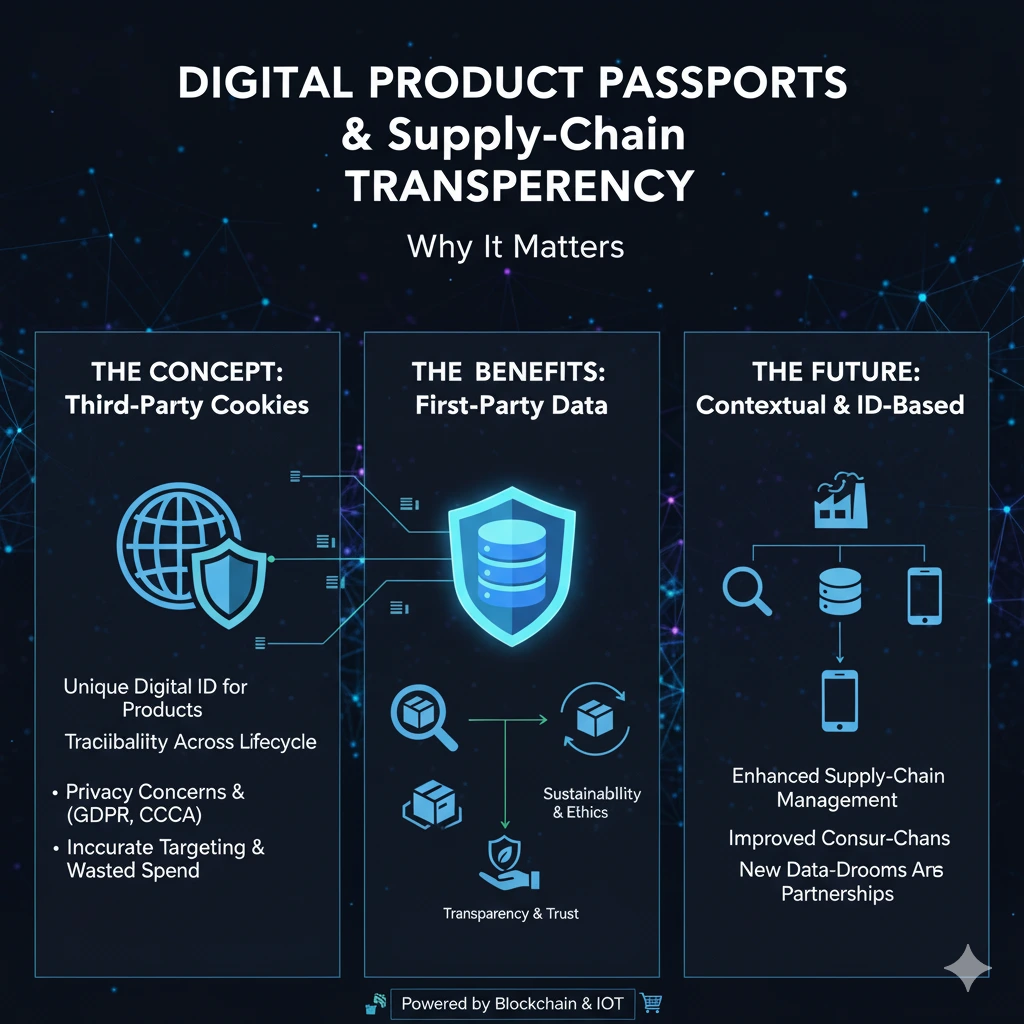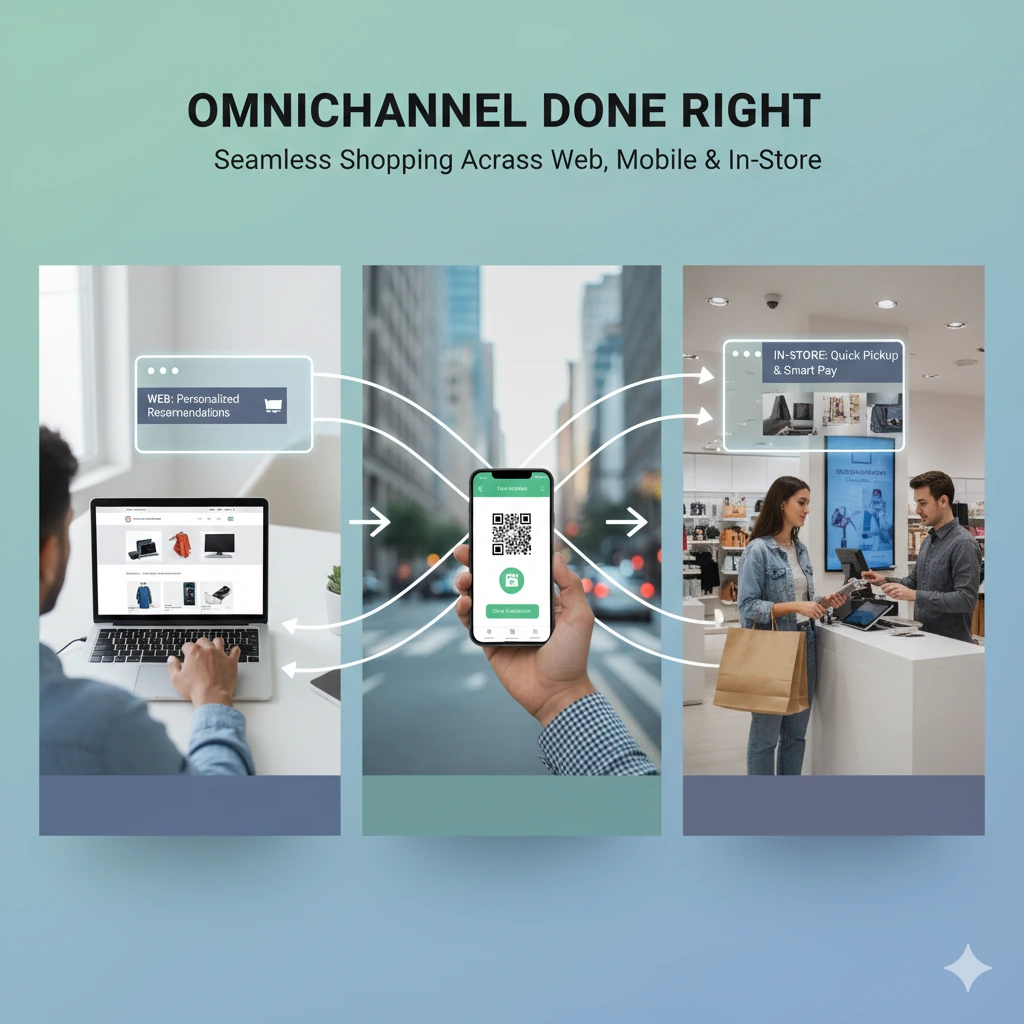In today’s hyper-connected commerce ecosystem, customer expectations are at an all-time high. Shoppers demand fast delivery, accurate availability, and flawless order fulfillment. Behind the scenes, this requires a smarter, data-driven, and fully connected supply chain. Businesses are realizing that the key to operational excellence lies in predictive inventory management, automation, and intelligent logistics. By integrating AI, machine learning, and robotics, organizations can optimize their back-end operations to reduce waste, cut costs, and enhance customer satisfaction.
The Shift Toward Predictive and Automated Supply Chains
The global supply chain landscape has transformed dramatically over the past decade. Traditional, reactive inventory models can no longer keep up with demand fluctuations, global disruptions, and shifting consumer behavior. Predictive systems powered by AI and big data analytics are enabling companies to move from reactive management to proactive optimization.
Predictive inventory management uses real-time data, historical sales trends, and external factors such as weather, seasonality, and social sentiment to forecast demand accurately. This technology not only prevents stockouts but also reduces overstocking and capital waste. When combined with automation and smart logistics, it forms the foundation of a self-optimizing, intelligent back-end ecosystem.
Why Predictive Inventory Matters
Inventory management has always been a delicate balancing act. Too much stock locks up cash flow and increases storage costs, while too little leads to missed sales and dissatisfied customers. Predictive inventory changes this equation by introducing data-driven precision.
Using machine learning algorithms, businesses can identify patterns and predict product demand at granular levels—down to specific regions, stores, or even customer segments. For example, an AI system might forecast increased demand for snow boots in a particular city based on temperature forecasts and social media mentions. These insights empower supply-chain teams to align procurement, manufacturing, and distribution in real time.
Moreover, predictive systems continuously learn and adapt. As new data flows in, algorithms refine forecasts, improving accuracy over time. This results in smarter replenishment strategies, optimized lead times, and minimal waste—key pillars of sustainable supply-chain management.
The Role of Automation in Modern Logistics
Automation is revolutionizing logistics operations by eliminating manual inefficiencies and improving speed, accuracy, and scalability. From warehouse robotics to automated guided vehicles (AGVs) and AI-driven order picking, automation ensures seamless coordination between inventory, order fulfillment, and delivery.
1. Warehouse Robotics and Smart Fulfillment
Modern fulfillment centers are rapidly evolving into robot-powered hubs. Robots handle repetitive tasks like sorting, packing, and palletizing with unmatched efficiency. Automated Storage and Retrieval Systems (AS/RS) use robotics and sensors to optimize space utilization and retrieve items faster than human workers. This automation not only enhances throughput but also reduces operational errors.
Companies like Amazon, Ocado, and DHL have already integrated AI-enabled robotics into their warehouses, achieving near-24/7 operations and improved order accuracy. Smaller businesses are following suit with affordable robotic solutions that scale alongside growth.
2. Automated Inventory Tracking and IoT Integration
Automation extends beyond physical movement. The Internet of Things (IoT) plays a crucial role in real-time inventory tracking. Smart sensors, RFID tags, and GPS systems monitor stock levels, temperature, and location across the supply chain. Data collected from these devices flows into centralized platforms where AI systems analyze patterns and trigger automatic restocking or alerts when anomalies occur.
For instance, an IoT-enabled warehouse can automatically reorder items that reach a low threshold or reroute shipments to avoid delays. This level of automation reduces human error and enables real-time visibility—a core requirement of next-generation logistics.
3. Robotic Process Automation (RPA) in Logistics Planning
Beyond physical automation, Robotic Process Automation (RPA) is streamlining administrative logistics tasks. RPA bots can process invoices, manage orders, update ERP systems, and even coordinate with suppliers. By automating repetitive data entry and reporting tasks, logistics teams can focus on strategic planning and exception management instead of routine operations.
Predictive Logistics: From Data to Decision
Predictive logistics takes supply-chain optimization to the next level by anticipating disruptions and making intelligent decisions in advance. Through AI-powered simulations, businesses can model “what-if” scenarios—such as weather disruptions, fuel shortages, or sudden demand spikes—and develop contingency plans automatically.
Predictive analytics also enhances route optimization. By analyzing traffic data, weather forecasts, and delivery windows, AI systems can recommend the most efficient paths for transportation. This reduces fuel costs, delivery times, and carbon emissions.
Furthermore, predictive maintenance ensures that logistics assets like trucks, forklifts, and conveyors remain in top condition. IoT sensors monitor equipment performance and detect signs of wear before failures occur, preventing costly downtime.
How Predictive and Automated Systems Work Together
Predictive intelligence and automation are most powerful when combined. Predictive analytics identifies what needs to happen, while automation executes those decisions instantly. This synergy creates a self-regulating supply chain capable of adapting in real time.
For example, if predictive analytics forecasts a surge in demand for certain products, automation can trigger immediate production adjustments, update warehouse allocations, and modify shipping routes without human intervention. This integration ensures agile and resilient logistics operations, even in volatile markets.
Benefits of a Smarter Back-End Ecosystem
1. Cost Efficiency and Waste Reduction
By aligning production and inventory with real-time demand, predictive systems minimize overproduction and excess storage costs. Automation further cuts labor expenses, reduces errors, and accelerates throughput. Together, these technologies drive significant cost optimization while promoting sustainability.
2. Faster Fulfillment and Improved Accuracy
Automation enables faster order processing and real-time visibility into inventory. Predictive insights ensure the right products are available at the right time. This combination results in faster delivery times, fewer stockouts, and improved customer satisfaction, critical factors in today’s competitive retail environment.
3. Enhanced Agility and Resilience
Predictive logistics allows companies to prepare for disruptions before they occur. Whether it’s a global supply shortage or a sudden demand spike, AI-driven systems can adjust sourcing, production, and distribution strategies instantly. This agility builds supply-chain resilience, helping businesses stay ahead in uncertain times.
4. Sustainability and Responsible Operations
Smarter logistics reduces waste, optimizes energy use, and lowers carbon emissions. Predictive models help companies forecast demand more accurately, reducing overproduction, while automated systems streamline delivery routes for minimal environmental impact. This supports ESG and sustainability goals, a growing priority in modern business strategies.
Future Trends in Predictive and Automated Logistics
The future of supply-chain management will be dominated by hyper-automation and AI-driven orchestration. Technologies such as digital twins, blockchain traceability, and edge computing will further enhance predictive precision and transparency.
Digital twins will allow companies to simulate and monitor entire supply chains in real time, testing the impact of decisions before implementing them. Blockchain will provide immutable proof of product movement, ensuring trust and accountability. Meanwhile, AI-driven decision engines will automate complex logistical workflows, enabling autonomous supply chains that can self-optimize continuously.
As 5G connectivity expands, real-time communication between machines, sensors, and control systems will enable near-instant responses to market changes. The combination of predictive analytics, automation, and logistics intelligence will define the future of smart supply chains—fast, transparent, and resilient.
Conclusion
Predictive inventory, automation, and logistics are revolutionizing how businesses operate behind the scenes. By blending AI-powered forecasting, real-time automation, and intelligent logistics, organizations can transform traditional back-end operations into smart, responsive ecosystems.
In a world driven by speed, data, and sustainability, companies that invest in predictive and automated technologies today will not only streamline operations but also secure a long-term competitive edge. The back-end may be invisible to customers—but when it’s smart, predictive, and connected, it becomes the true engine of future-ready business success.


